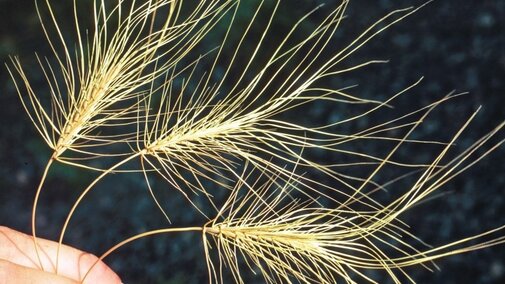Early Detection and Rapid Response (EDRR) is a concept to identify potential invasive species prior to or just as the establishment of the invasive is taking place. An integrated pest management plan can be developed to manage, contain, and eradicate the invasive species before it can spread further. This will avoid costly, long-term control efforts.
Ventenata and Medusahead are two invasive grasses that have been identified in parts of Wyoming. Both of these invasive grasses are slowly spreading east. While neither of these grasses have been identified in Nebraska, we need to be aware of what these grasses look like and how they spread. We need to be prepared to deal with them should they reach our state.
If these species become established in the Pine Ridge area or the Sandhills, they could be devastating to the ecology and range production.
This issue of CropWatch will feature information on Medusahead and an upcoming issue will look at Ventenata.
Medusahead
- Also known as: Medusahead Wildrye, Medusahead rye, rough Medusahead
- Scientific name: Taeniatherum caput-medusae (L.) Nevski
- Family: Poaceae/Gramineae
- Origin: Eurasia and the Mediterranean area. First reported in North America in the 1880s, Medusahead now occupies over 2.3 million acres in 17 western states.
Medusahead is an exotic, invasive, self-pollinated winter annual grass. It germinates in the fall, overwinters as a seedling, and can have multiple flushes. It is typically 6-20 inches tall with distinct bristly seed heads. Multiple stems can emerge from the base of the plant, each producing a single seed head. Each seed head may contain 20 or more seeds. Awns protrude upward and outward, with a twisting appearance. Seed heads are similar in appearance to Bottlebrush Squirreltail (Elymus elymoides) and Foxtail Barley (Hordeum jubatum), but the Medusahead seed heads do not fall apart. Foliage is bright green and upright. Seed longevity is two to three years. Medusahead matures two to four weeks later than most annual grasses. Medusahead has been shown to displace cheatgrass (downy brome).

Medusahead produces a lot of thatch which has a high silica content and is slow to decay. The thatch is also highly flammable. While the thatch acts a barrier to other plant species’ germination and establishment, Medusahead seedlings thrive in this environment. Medusahead seed can be transported long distances via wind, water, animals, and human activities. The Medusahead seed awns have small barbs which help the seed adhere to clothing and hair of animals or other plant parts that may move with the wind.
The high silica content in Medusahead makes it a less desirable forage. It can be grazed early, prior to seed head formation — timing is important. The seed heads contain stiff glumes that can cause damage to the eyes and mouths of grazing animals and pets. Proper grazing management practices and maintaining a diverse rangeland plant community are important to preventing the establishment of Medusahead.
Burning can reduce the thatch layer and seed levels, but also can reduce the number of desirable plants and seed. Hand pulling and removal in small sites can be effective. Rotary mowing Medusahead in the early flowering stage before viable seed can be produced can reduce seed production. Revegetation must be carefully considered due to timing and precipitation events needed for germination of the desirable species.
Chemical applications can be effective, but costly. A number of herbicides are labeled for Medusahead management, including glyphosate, imazapic, aminopyralid (certain states), and other products are labeled. Be sure to read, understand and follow all label directions. The site/crop to be treated must be on the label.
An integrated management approach is required for control of Medusahead. Prevention is the best means to achieve this goal. Using more than one management option will have a greater effect than using a single option. Combining different grazing strategies, implementing prescribed burns, timely mowing, and chemical applications will be required. Timing of product application can be critical for proper control. Monitoring and follow-up treatments are required to keep the Medusahead in check and eliminated.

